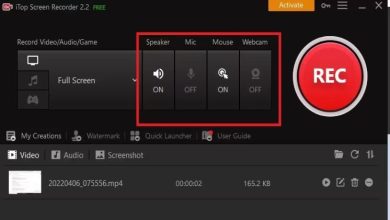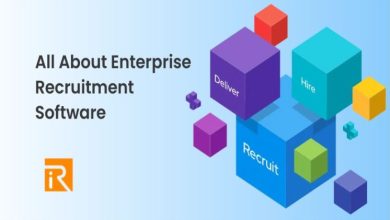
Every organization, from small businesses to large enterprises, purchases third-party goods and services to operate and grow. Traditionally, procurement teams have relied on paper or generic digital tools like email and spreadsheets to manage requests for proposals (RFPs), purchase orders (POs), vendor bids, contracts, invoices, and other purchasing documents.
But these manual, fragmented systems are inefficient. They foster opaque spending, frequent maverick purchases, compliance issues, and little data visibility. The procurement portal software aims to eliminate these challenges through automation, collaboration, and data centralization.
Selecting a user-friendly portal that unifies procurement data and streamlines approval workflows is essential. This article will detail the key benefits advanced procurement portals provide over basic digital tools or manual processes. It will also provide an overview of must-have features to allow informed procurement portal software selection.
- Process Efficiency
A primary benefit of implementing a quality procurement portal is dramatically improved process efficiency. Automation and seamless workflows eliminate the bottlenecks, delays, and frustrations inherent in manual systems.
The portal allows buyers to quickly generate RFPs or RFIs, route them for digital approval, receive bids, communicate clarifications, and execute contracts fully online. Time-consuming administration like data entry and emailing forms is eliminated through automation.
This reduces the effort required per transaction while accelerating cycle times. Smooth digital workflows and multi-system integration prevent delays between process stages. Intuitive tools minimize training requirements. Procurement portals can cut cycle times by over 50% versus manual processes.
- Total Visibility
Fragmented procurement systems across buyer departments prevent a holistic understanding of enterprise spend. This fosters maverick buying, duplicate purchases, and missed savings.
Quality procurement software centralizes all purchasing data on a unified platform. This consolidates invoices, contracts, communications, and other purchasing information enterprise-wide. Custom reporting and data visualizations provide actionable, real-time spending insights.
Total visibility empowers more strategic supplier negotiations, consolidation opportunities, policy compliance, and data-driven decisions. It is impossible to optimize procurement without a unified portal consolidating enterprise-wide spend.
- Enhanced Collaboration
Manual procurement processes rely heavily on phone calls, individual meetings, and email chains. This siloed communication hinders consensus-building and stakeholder alignment.
Advanced procurement portals have built-in tools like threaded messaging, alerts, file sharing, and user permissions that facilitate collaboration. All stakeholders can access the same centralized information to coordinate activities.
Structured collaboration tools also smooth engagement between buyers and suppliers for RFPs. Supplier portals allow virtual Q&A, document sharing, and joint review of proposals. Enhanced collaboration improves procurement outcomes.
- Supplier Management
Basic portals lack capabilities for managing your supplier ecosystem beyond transactions. Leading procurement software enables sourcing, contracting, performance tracking, and relationship building with suppliers all in one place.
Robust supplier scorecards, searchable profiles, and communication tools provide complete visibility into suppliers. You can easily identify high-performing strategic partners versus underperforming vendors. This empowers data-driven supplier management to reduce risk and costs.
- Configurability
Every organization has unique procurement processes, requirements, and existing systems. The ideal procurement portal provides flexible configuration to match your po procedure rather than forcing you to adhere to restrictive templates.
Prioritize software that allows you to set custom fields, approval workflows, rules and alerts, integration APIs, and branding without coding. Configuration accelerates user adoption by matching the platform to your established procurement environment.
- Compliance Controls
Manual procurement processes make it challenging to maintain oversight and enforce purchasing policies. Quality portal software has built-in compliance controls like automated policy checking on orders and restricted user permissions.
Configurable workflow rules route orders to the right approvers, ensure preferred suppliers, and flag non-compliant transactions. These controls reduce off-contract spending, remediate issues pre-purchase, and provide audit trails. Compliance protects profits and the company’s reputation.
- Analytics and Reporting
Advanced analytics and reporting are vital procurement portal capabilities. Look for embedded reporting tools that allow drilling into spend data, uncovering trends, and creating visualizations without IT help.
Robust analytics applications provide insights like budget overruns, alternate supplier options, negotiation opportunities, and changes in buying patterns. Quality analytics make the portal a strategic procurement asset.
- Intuitive Interface
Employee adoption requires software that is intuitive and easy to use. Prioritize procurement portals with modern, consumer-style interfaces versus complex enterprise platforms.
Look for sleek menus, search, drag-and-drop, mobile compatibility, and tooltips to guide users. The system should facilitate everything from simple ad hoc purchases to complex RFP and contract workflows without extensive training.
- Ongoing Optimization
Leading portals feature built-in tools, learning capabilities, and best practices to continually enhance your procurement program over time.
Prioritize systems with digital assistants, process mining, and prescriptive insights that regularly identify ways to fine-tune workflows, policies, supplier mix, and other elements. Continuous improvement sustains gains.
- Scalability
As your organization grows, procurement volumes and complexity will increase. Ensure any portal software you select can smoothly scale up.
Prioritize cloud-based systems that easily accommodate increases in transactions, data, workflows, and users without compromising performance. Scalability prevents growing pains.
- Cybersecurity
As cyber threats are increasing, security has become more important than ever before, especially for a centralized platform that holds sensitive data. Seek procurement portals that have strong encryption, access control mechanisms, and cyber protection measures.
Major manufacturers have developed security features such as automatic data backups, redundant infrastructure, and third-party audits. Rigorous security is a must.
- Mobility
Agile procurement needs on-the-go access. Focus on portals with user-friendly mobile apps and responsive design. It allows procurement teams to approve orders and control suppliers remotely.
Such features as photo capture, notifications, and quick approvals make productivity possible on any device. When mobility is facilitated, adoption increases.
- Ongoing Support
Implementing new software involves a learning curve. Consider procurement portals that have superior technical support and tools to facilitate smooth onboarding and problem resolution.
The long-term success support structure includes powerful help centres, training programs, user communities and dedicated account management.
- Change Management
It is only through a proactive approach to managing the change process that all the benefits of portal can be achieved. Evaluate the change management frameworks, resources, and knowledge of software vendors.
Successful change management results in user acceptance, achieves expected ROI, and puts processes into alignment with technology. If implemented, stakeholder engagement must be ongoing.
Conclusion
Procurement through a purpose-built portal is organized, coordinated, evidence-based, and goal driven. The portal thus serves as a central point for all the stakeholders, systems and suppliers involved in source-to-contract process.
When evaluating portal software, look for solutions that provide process automation and visibility across the enterprise with collaborative tools, supplier management features, and configurable templates. Implement a structured selection procedure to select the best platform that will increase procurement efficiency, savings, and impact.


